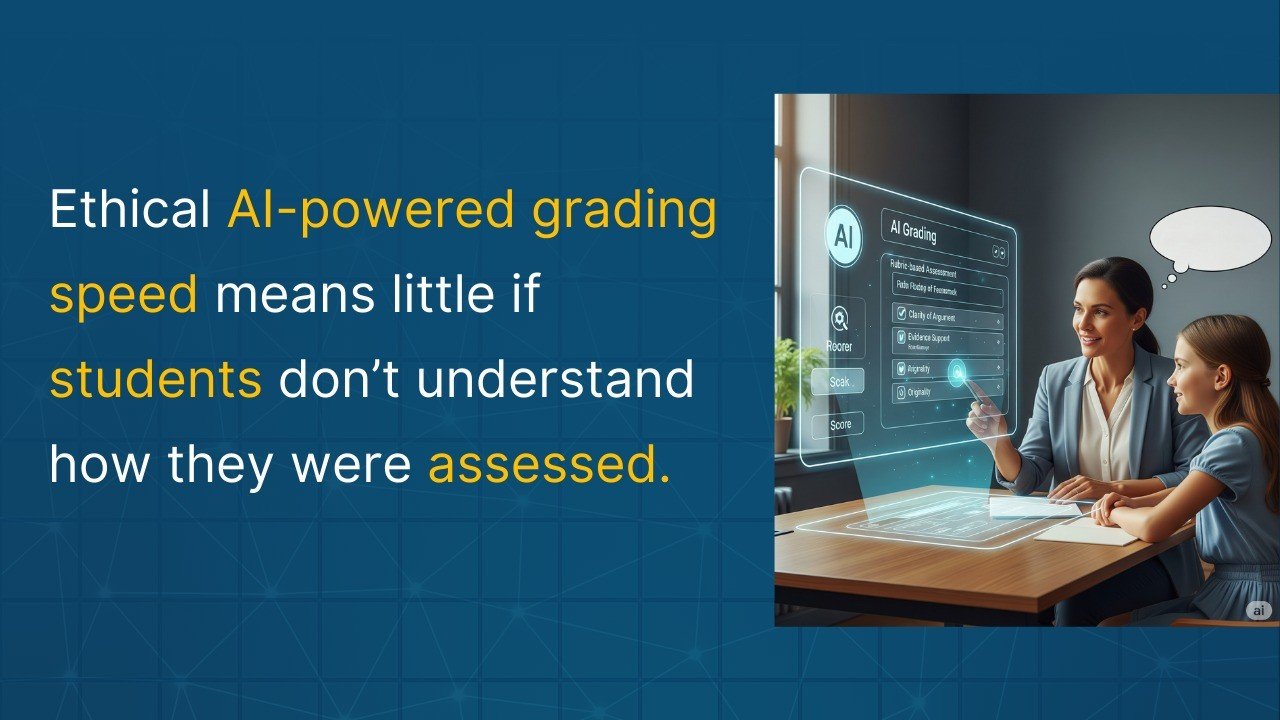
I recently came across a major EdTech platform reporting that its AI-powered auto-grading system reduced evaluation time by over 60%. That’s huge in my book. Teachers had more time to focus on teaching. Students got instant feedback. Learning moved faster.
But here’s the thing I don’t hear people say out loud:
If a student believes they were graded unfairly, that speed doesn’t matter. Trust breaks. Learning suffers.
For me, AI in education isn’t just a backend tool. It’s a decision-maker. It directly impacts a learner’s confidence, their outcomes and sometimes, their future.
Which means, every AI-powered system we build must pass a single test:
Can it be trusted, not just by regulators or engineers, but by students, parents, and teachers in the real world?
Here are four non-negotiables I believe every EdTech product must build into its AI layer:
1. Bias doesn’t disappear. It must be stress-tested and iterated towards reduction.
It’s easy to assume your model works “well enough.” But AI learns from patterns and patterns reflect bias. I have seen cases where over-represents geographies, accents, or response styles, quietly penalize students who don’t fit the training data’s mould.
What we can do:
- Simulate edge cases: diverse names, dialects, answer formats, and neurodiverse expression styles.
- Test for disparate impact across gender, language background, and socio-economic groups.
- Create a stress-test protocol before every deployment, not after public complaints.
AI doesn’t need to be perfect. But it has to be self-aware, and we have to make it so.
2. Explainable scoring isn’t a feature. It’s a learner’s right.
If a student asks, “Why did I get 6 instead of 8?” and our product can’t answer that clearly, we have already lost their trust.
Black-box scoring is fine for internal tools. But for learning systems we design, it’s unacceptable
What we can do:
- Use interpretable models for high-stakes assessments.
- For complex models, build a scoring breakdown layer that shows:
Students must be able to learn from the grading itself.
3. Data provenance and consent can’t be an afterthought.
Behind every dataset is a learner. I never forget that someone shared their voice, their essay, their responses, often without knowing they would be used to train my model.
What we can do:
- Build a Data Provenance & Consent Checklist:
- Make this checklist a mandatory gate before model deployment.
Transparent data practices are not just ethical. They can save us from compliance nightmares and strengthen trust with our users.
4. Escalation is not optional. Human-in-the-loop must be designed in.
AI will get it wrong. That’s not the issue. The issue is how I respond when it does.
If a student’s grade feels off or a teacher flags a concern, our system should have a clear escalation ladder.
What we can do:
- Set thresholds for auto-flagging ambiguous or borderline cases.
- Route flagged cases to trained human reviewers.
- Design for feedback loops: escalated cases must be tracked, resolved, and used to retrain your model.
Further, human-in-the-loop isn’t just about refining the system. It’s about the learner too. Because while AI can personalize pace and content, it cannot provide empathy or context. That’s where faculties come in, not only as subject experts, but as growth coaches. Their role shifts from delivering information to nurturing confidence, building resilience, and offering the kind of feedback that makes learning human.
Final Thought
AI in EdTech doesn’t just need to be fast or smart. It needs to be fair, explainable, and human-aware.
Every hour saved through automation is valuable. But the real win is when we know every student feels seen, understood, and respected by the system itself.
That’s the future I look forward to building.
#EthicalAI #EdTechDesign #AIInEducation #ResponsibleTech #TrustworthyAI #HumanCenteredAI


